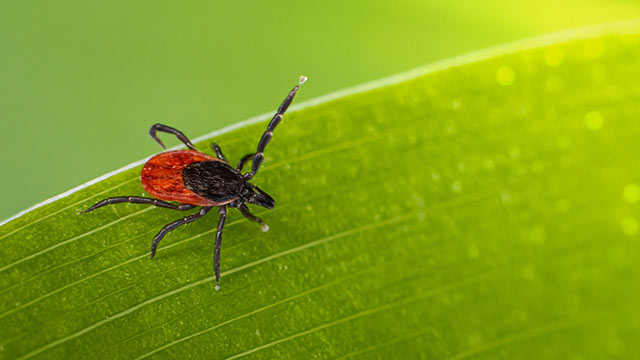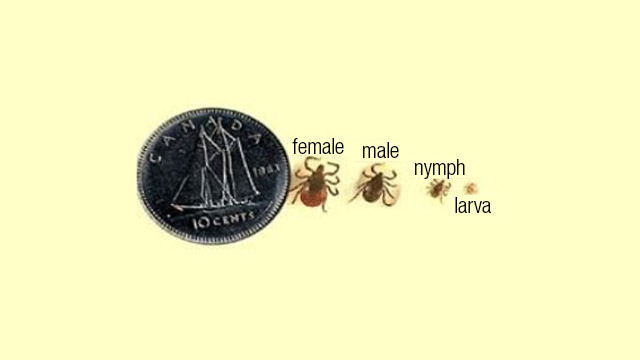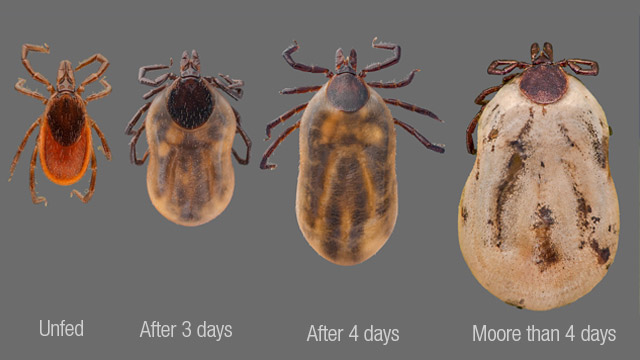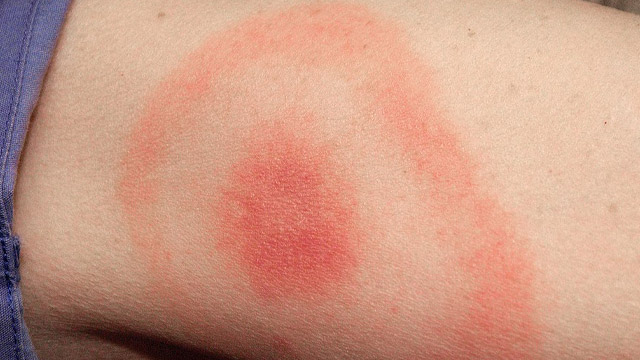Ticks and Lyme disease
Saint-Ours Canal National Historic Site
The blacklegged ticks

The blacklegged tick (deer tick) is the only tick species of a dozen or so found in Quebec that can transmit the bacterium Borrelia burgdorferi, the agent responsible for Lyme disease, as well as several other bacteria and viruses.
More specifically, ticks live in forests, woodlands, gardens, tall grass and piles of dead leaves.
Contrary to what we may think, they do not jump, but rather cling to us when we come into contact with the vegetation on which they are found. Ticks are active as soon as the temperature reaches 4°C and there is no more snow on the ground.
How to recognize the blacklegged tick?
Ticks have three stages of development: larva, nymph and adult. Nymphs are small (the size of a sesame seed) and have three pairs of legs, while adult ticks are the size of an apple seed and have four pairs of legs.
At each stage of their life, ticks feed on the blood of animals or humans. Measuring 1 to 3 mm before feeding, they can triple in size when gorged with blood. Their bite is usually painless and often goes unnoticed.


Lyme disease
Lyme disease can occur after the bite of a tick carrying the bacteria, but if the tick is removed within 24 hours, the risk of developing the disease is greatly reduced.
The symptoms of Lyme disease

- Redness in the shape of a ring or target, at the site of the bite (present in 70% of cases) which can spread to over 5 cm;
- Fatigue;
- Fever, headache;
- Stiffness in the neck;
- Swollen glands;
- Muscle and joint pain.
What to do if you are bitten by a tick?

- Remove the tick as soon as possible with clean, fine-tipped tweezers (tweezers or splinter tweezers), placing them close to the skin, without twisting, and taking care not to squeeze the tick's abdomen;
- Disinfect the area;
- Keep the tickin an airtight jar in the refrigerator for possible medical consultation;
- Monitor for symptoms;
- Call Info-Santé 811 or see a doctor if you have symptoms. In some cases, a preventive treatment of antibiotics may be administered.
Prevention and protective measures against ticks
- Avoid tall grass, stay on the path and the trails;
- Use mosquito repellent on exposed parts of your body;
- Wear a hat, closed shoes and long, light-coloured clothing;
- Tuck the bottom of your pants into your socks and your sweater into your pants;
- Examine your pets, clothing and skin for ticks, especially in hard-to-see areas (e.g., scalp, ears, back of knees, neck, groin, armpits, belly button, lower back and buttocks, between the toes, etc.);
- Dry your clothes in the dryer on high heat;
- Shower as soon as possible (ideally within two hours) following contact with vegetation in risk areas.
For more information on Lyme disease and the blacklegged ticks, please visit the following websites:
There is a significant risk of getting Lyme disease in the Saint-Ours Canal area. Visit the Institut national de santé publique du Québec website for more information.(french only)
- Date modified :